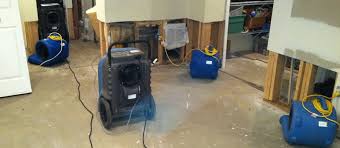A flood-damaged house is a house that has been affected by rising water levels, typically as a result of heavy rains, a natural disaster, or a failed water management system. This can lead to many problems such as damaging the walls, electrical appliances and many other things. Other than this it will also result in the growth of mould and mildew. Hire a water mitigation company in Adelaide to recover your flood-damaged house with rapid response.

A flooded house can be saved, but the extent of the damage and the necessary repairs will vary depending on the severity of the flood and the length of time the house was submerged. Read on the blog to know in detail how a flooded house can be saved.
One of the most obvious effects of a flood on a house is water damage. This can include damage to the walls, floors, and ceilings, as well as to the electrical and plumbing systems. In some cases, the water damage may be so severe that it causes the walls or floors to buckle or collapse.
Another common issue with a flood-damaged house is mould growth. Mould can begin to grow within 24-48 hours of a flood, and it can spread rapidly if not addressed promptly. Mould can cause health problems and can also lead to further damage to the house.
In addition to water damage and mould, a flood-damaged house may also have structural damage. This can include issues with the foundation, walls, and roof of the house.
A flood-damaged house may also have damage to the electrical and plumbing systems. The electrical system may have shorted wires or damaged outlets, while the plumbing system may have burst pipes or backed-up sewer lines.
Saving a flooded house can be a challenging task but it is possible with the right approach and with the help of qualified professionals. Read on for details.
Step 1- Remove The Water- The first step in saving a flooded house is to remove all standing water and dry out the structure as quickly as possible. This can be done by pumping out the water, using fans and dehumidifiers, and opening windows and doors to allow for natural ventilation. It is important to note that electrical systems and appliances should not be turned on until they have been inspected and deemed safe by a qualified electrician.
Step 2- Assess The Damage- The next step is to assess the damage and determine what repairs are necessary. Common issues that arise after a flood include mould growth, structural damage, and damage to the electrical and plumbing systems.
Step 3- Remove Mold- Mold growth can occur within 24-48 hours of a flood, and it is important to address this issue as soon as possible to prevent further damage and potential health hazards. Professional services for Carpet Mould Damage Removal in Adelaide can be hired to safely remove and prevent the growth of mould in the affected areas.
Step 4- Treat Structural Damage- Structural damage can include issues with the foundation, walls, and roof of the house. A structural engineer or building inspector should be consulted to assess the extent of the damage and determine what repairs are necessary.
Step 5- Solve Electrical Damage- Damage to the electrical and plumbing systems can also occur during a flood, and it is important to have these systems inspected and repaired by qualified professionals before turning them back on.
It is also recommended to take steps to prevent future floods, such as installing a sump pump, elevating the furnace, water heater, and electrical panel, or even relocating to a flood-safe area.
Saving a flooded house can be done with the help of professionals. They use the right techniques for removing the water from your house. There are many benefits to hiring a professional flood damage repair company. If you are in search of the best flood water damage repair service providers in Adelaide, hire professionals at emergency carpet water damage restoration in Adelaide. We have enough experience in this field which helps them in treating all the problems related to flooding water damage. So, you can plan to save your house from flooding with experts.
Published on: January 27, 2023
Last updated on: January 30, 2023